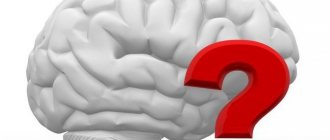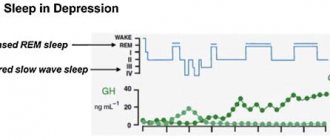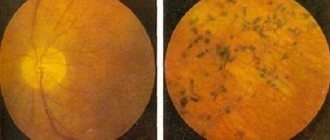There are three forms of dyslalia:
- physiological - age-related speech defect of the child;
- mechanical - due to the incorrect structure of the speech apparatus (there is a possibility of hereditary transmission);
- functional - speech impairment is not caused by pathologies of the organs that are responsible for speech function.
Everything is clear with the first two forms. But what to do when functional dyslalia is diagnosed? Speech therapy in this case offers powerful correction methods that can help the patient. However, it is paramount to understand what causes it and how it manifests itself.
The occurrence of functional dyslalia is associated with stable individual characteristics of the nervous system. This type of disorder is reversible, in contrast to mechanical dyslalia, which is caused by the incorrect structure of the speech apparatus, when correction is only possible through surgery.
Symptoms of dyslalia in children
Various signs of dyslalia are observed. One of the options is omissions, when various sounds drop out of speech during a conversation. The next symptom is the replacement of sounds with dyslalia. Patients replace one sound with another. This happens due to the difficulty of determining the pronunciation features of sounds.
There may also be confusion, when the child either confuses sounds or pronounces them correctly. The cause of the disorder is poor assimilation of the phoneme system.
Distortion is characterized by abnormal pronunciation in dyslalia, when children use sounds that are not in the language. They may distort sounds or pronounce them using the wrong organs: interdental “s” instead of the correct fricative.
In the functional form of the pathology, the pronunciation of one or several sounds is impaired, while in the mechanical form, the pronunciation of many sounds that are similar in pronunciation is impaired. For example, with an anterior open bite, when there is no contact between the teeth in the anterior regions, the tip of the tongue cannot maintain a position behind the teeth.
The lexical and grammatical component of speech is formed according to age. The vocabulary is sufficient, the syllable structure is normal, the inflection of words is correct. Thinking with dyslalia is intact. The baby shows a high level of coherent speech in a conversation and understands spoken speech.
In addition to pathological, there is also age-related dyslalia, or physiological. Its cause is imperfect speech skills associated with age. Over time, these disorders go away on their own and do not require specialized help.
In turn, experts distinguish two types of functional dyslalia:
- sensory type - occurs against the background of neurodynamic disorders of the central part of the speech and hearing apparatus;
- motor variant - occurs against the background of neurodynamic disorders of the central part of the speech and motor apparatus.
Sensory dyslalia is characterized by a violation of the distinction between sounds that are similar to each other. When pronouncing, the child confuses hissing or whistling sounds, dull or voiced, hard or soft. Therefore, when he is asked to say, for example, “a word,” he can pronounce “shlovo,” that is, an interchange of sounds occurs. In addition to oral speech, if the patient takes dictation, he may make a similar mistake in writing.
Motor dyslalia is characterized by a discrepancy between the movements of the lips and tongue when pronouncing sounds. Articulation becomes blurred, and as a result, a phonetic defect appears.
In severe cases, it is possible to diagnose the totality of sound pronunciation, then the doctor diagnoses sensorimotor dyslalia. The degree of difficulty in pronunciation and differentiation of sounds by the patient may vary.
According to the nature of the disorder, dyslalia is:
- articulatory;
- acoustic;
- articulatory-phonetic - occurs as a result of incompletely formed phonetic hearing; when pronouncing a word, the patient incorrectly identifies difficult sounds (“crust” - “hill”, “bones” - “gostochki”);
- articulatory-phonemic - characterized by the replacement of a heard sound with a similar one, provided that the articulatory positions are located incorrectly (“gone” - “settled”);
- acoustic-phonemic - incorrect articulatory placement during pronunciation, as a result of which distortion of pronounced sounds occurs (the letter “r” is pronounced with grazing).
Depending on how many sounds the patient does not make, the form of the disorder is determined.
There are two forms of dyslalia:
- complex - the perception and reproduction of more than four sounds is impaired;
- simple - characterized by the same type of violation: monomorphic (vowels or consonants only) and polymorphic (vowels and consonants).
In speech therapy, there is a special table of disorders to classify dyslalia by sounds. The Greek alphabet was taken as a basis:
- Yotacism - incorrect pronunciation of words containing the sound “Y”;
- rhotacism - incorrect pronunciation or replacement of the sound “R”;
- hitism - problems with recognizing and pronouncing the sounds “X” and “K”;
- kappacism - difficulty pronouncing words containing “K”;
- gammacism - incorrect differentiation of the sound “G”;
- sigmatism - violation of pronunciation or replacement of hissing and whistling sounds;
The danger of dyslalia lies in the fact that complex cumulative defects in pronunciation and sound recognition can arise against its background. In the case when a patient is diagnosed with combined dyslalia with a phonemic deviation, a “pair” will be present in the diagnosis, for example, paraiotacism.
Types of dyslalia in a child
As can be seen from the reasons, there are 2 forms of pathology. Functional dyslalia of speech is divided into 3 types:
- motor, which occurs as a result of neurodynamic changes in the central parts of the speech motor analyzer. It is characterized by inaccurate pronunciation of sounds, their distortion, while the baby selects the sound correctly. This phenomenon is called a phonetic defect;
- the sensory form is accompanied by the same disturbances, but in the speech-hearing analyzer. Difficulties arise in the auditory discrimination of phonemes that are similar in pronunciation: voiced and voiceless, hard and soft consonants, hissing and whistling. The kids replace one with the other, mix them up, and the replacements are always repeated. This form is defined as a phonemic defect;
- A feature of sensorimotor dyslalia is the presence of both substitutions and distortions of sounds.
Based on the number of pathological sounds, simple dyslalia is distinguished, when the baby pronounces 1-4 sounds incorrectly, and complex dyslalia - more than 4 sounds.
Depending on the sounds and nature of the defect
Depending on what signs of sounds are affected (acoustic, articulatory), and what nature of the defect is present, the following types of disorders in dyslalia are distinguished:
- an acoustic-phonemic form, sometimes mistakenly called acoustic dyslalia - the baby does not distinguish between acoustically close phonemes. Pronounces sounds correctly, without defect, but either misses them or replaces them, for example, says “sh” instead of “zh” in the word “beetle”;
- the articulatory-phonemic form is characterized by the use of “wrong” sounds due to impaired phonemic hearing and the inability to sense the position of the speech organs and control their movements;
- articulatory-phonetic form, erroneously - articulatory dyslalia, is caused by distortion of sounds due to pathologically formed articulatory positions, while the baby perceives sounds correctly by ear.
Due to lack of pronunciation of sounds
Speech therapy uses a classification using the Greek alphabet: it takes into account the shortcomings in the pronunciation of sounds of different groups.
| Term | Lack of pronunciation |
| Rotacism | hard, soft "r" |
| Lambdacism | hard, soft "l" |
| Sigmatism | whistling, hissing |
| Yotacism | "th" |
| Gammacism | hard, soft "g" |
| Kappacism | hard, soft "k" |
| Hitism | hard, soft "x" |
| Stun/Voice Deviations | replacing voiced consonants with voiceless ones and vice versa |
| Hardness/softening deviations | replacing soft consonants with hard ones and vice versa |
There are also combined defects.
Causes of dyslalia
If we consider mechanical dyslalia, experts note the main reason for its occurrence - a defect in physical development, which does not allow the patient to correctly reproduce the sound he hears. Appears mainly in the presence of dental defects (such as abnormal bite, unerupted or incorrectly formed incisors, underdevelopment of the lower jaw, cleft palate, etc.).
Functional dyslalia develops against the background of an unstable mental or physical state of the child. This may be due to injuries received.
Very often, dyslalia is diagnosed in children with mental development problems. Another factor that provokes dyslalia are diseases of high severity suffered at the time of formation of speech function. Often the cause of the development of dyslalia is the parents themselves, namely the lack of communication and attention paid to a preschool child who is in the active stage of speech formation.
Rarely, there are cases of combined dyslalia.
Doctors identify a number of main reasons for the development of mechanical dyslalia. These include:
- underdevelopment of the frenulum of the tongue (short);
- irregular maxillofacial bone structure;
- palate defects;
- underdevelopment of the frenulum of the upper lip;
- violation of the integrity of the upper hard palate and lip.
Considering the above reasons, a speech therapist can diagnose a speech disorder, but the treatment process is transferred to the hands of dentists and orthodontists, after which the child is recommended to undergo a course of speech correction. The best treatment results are achieved at the age of 5–6 years.
Prerequisites for functional dyslalia
This type develops due to the abnormal mental or physical state of the child. Often this diagnosis is made to children experiencing problems with mental development. In this case, the structure of the speech apparatus does not suffer, hearing is normal, and the innervation of the muscles responsible for articulation is not impaired. In children with the speech problem under consideration, the structure of the peripheral speech apparatus is normal, the innervation of the articulatory muscles is not impaired. There are two types of factors that cause this type of dyslalia.
Biological background
This group of factors includes:
- delayed psycho-speech development;
- somatic diseases;
- infectious diseases suffered during the period of active speech development;
- chronic diseases;
- hypovitaminosis;
- nutritional disorders (dystrophy).
These disorders affect neurodynamics, which is responsible for the differentiation of the speech-hearing apparatus and the speech-motor analyzer. With this manifestation, articulatory movements are not accurate enough, and speech kinesthesia may be observed.
Social preconditions
This group of factors includes:
- improper speech education;
- parents copying babbling words;
- consolidation in speech of incorrect sound pronunciation on the part of adults (burr, lisp, dialect).
During the period of speech development, a child may find himself in a bilingual environment, which can also lead to the development of dyslalia. In this case, the pronunciation rules of one language apply to the other.
Pathogenesis
Functional dyslalia is associated with an imbalance and weak dynamics of the nervous processes occurring in the child’s brain. The cortical areas do not have pronounced pathologies, but there is insufficient coordination between speech excitation and inhibition. The nature of the speech disorder is determined by the localization of the neurodynamic disorder in the subcortical region of the brain. If the entire speech department is affected, motor failure occurs, the pronunciation of individual phonemes suffers, and, secondarily, speech hearing.
If the localization is in the sensory zone (Wernicke's center), defects in sound perception primarily appear, which leads to expressive speech. This is how phonemes are mixed and replaced.
Social prerequisites for functional dyslalia
Social preconditions are those associated with adults. These include:
- parents may lisp;
- parents often make mistakes in their speech;
- being in a bilingual environment;
- they do not study enough and pay little attention to it (pedagogical neglect);
- reduced differentiation of hissing and whistling sounds;
- delays in mental development.
All these reasons can be eliminated if appropriate correctional work is carried out by speech therapists, psychologists, and parents.
Symptoms of a sound perception disorder
It will not be difficult for attentive parents to notice a violation of the perception or reproduction of sounds in a child. This manifests itself in the distortion, replacement or omission of letters or sounds.
When a child has dyslalia, which is characterized by the omission of certain letters, the main symptom is their absence in any part of the word.
If sound substitution occurs, then the symptom is a change from an audible sound to a reproduced one. Such a violation occurs due to the fact that the child does not differentiate phonemes according to articulatory and acoustic aspects. With such a deviation, the patient replaces sounds in any order, regardless of how they were formed in the original word, without classifying them into hard, soft, voiced and hissing.
When mixing sounds, the child from time to time pronounces the sound correctly or incorrectly, which indicates that the process of assimilation of phonemes is incomplete.
If a child suffers from dyslalia, characterized by distortion of sounds, then you can notice this when communicating with him. Such patients use sounds or letters in their speech that are not initially present in the original word. Most often, such a defect occurs in patients with mechanical dyslalia.
If a child has functional dyslalia, then in his oral speech one can notice a violation of the reproduction of one, or at most a couple of sounds. If there is a mechanical disorder, the patient finds it difficult to identify a group of sounds that are similar to each other. In case of underdevelopment of the lower jaw, the patient will pronounce sounds through anterior lingual articulation, which is due to the inability to hold the tongue in the area of the front teeth.
Dyslalia refers to speech disorders that tend to recover. This is due to the child growing up. If during this period parents pay attention to the fact that their child is suffering from a disorder and seek qualified help, then the chances of recovery are high. However, even those children who have not undergone speech correction with dyslalia have a rich vocabulary; depending on the form of the disorder, they can correctly write words and inflect them, break them into syllables and develop correct coherent speech.
Speech therapists also identify physiological dyslalia, which was discussed earlier. This disorder goes away on its own in children by the age of five and is caused by the formation of the most important functions of the body: hearing and speech.
Kinds
Phonetic defects in the pronunciation of various sounds are designated by the following terms:
- Sigmatism - problems in the pronunciation of hissing [zh], [sh], [sch], [h], as well as whistling [s], [s'], [z], [z'];
- Rotacism – [p] and [p'];
- Gammacism – [g] and [g'];
- Lambdacism – [l] and [l'];
- Hitism – [x] and [x'];
- Yotacism – [th];
- Kappacism – [k] and [k'];
Defects of softening and hardness - soft consonants are replaced by paired hard sounds (and vice versa);
Defects of voicing and devoicing - voiced consonants are replaced by paired deaf ones (and vice versa).
In addition, combined complex defects are common, such as: sigmatism + rhotacism, sigmatism/rhotacism + softening defects, lambdacism + rhotacism, etc.
If there is a phonemic defect (replacement of sounds), the prefix “para-” is added to the name of any of the above defects: paracappacism, paralambdacism, parayotacism, paragammacism, etc.
Causes of dyslalia
Incorrect pronunciation of sounds in mechanical dyslalia is caused by organic defects of the peripheral articulatory apparatus: tongue, teeth, lips and jaws.
– Defects of the tongue and lips
Some structural features of the tongue and lips that can cause dyslalia include a short frenulum of the tongue or upper lip. Less commonly, the causes are a massive or narrow and small tongue (usually in children with problems in general physical or mental development), as well as too thick, inactive lips. In the case of a shortened hyoid ligament, the pronunciation of upper lingual sounds is first deteriorated if there is any anomaly of the lips - labial and labiodental sounds.
– Defects in the structure of the bone base of the speech apparatus
These disorders can be expressed by factors such as:
- anomalies of the dentition (sparsely spaced or small teeth, etc.);
- malocclusion (open, cross, deep, progenia, prognathia);
- the upper palate is high and narrow (Gothic) or, on the contrary, low and flat.
Defects that cause mechanical dyslalia can be either congenital or acquired - arising after diseases or injuries to the teeth or jaw. However, it is important to understand that disorders that are associated with a cleft upper lip, soft and hard palate are not classified as dyslalia, but as rhinolalia.
— Social and biological factors
In the case of the development of functional dyslalia, the structure of the articulatory apparatus does not change - this means that there is no organic basis for the violation of sound pronunciation. In such a situation, dyslalia is caused by biological or social factors.
Unfavorable social factors include children’s imitation of adults with incorrect speech (too fast, tongue-tied or dialectal), and imitation of baby babble. Problems may also arise for children living in an international family where they speak two languages.
Biological factors that cause functional dyslalia in children: general physical weakness in sick children, minimal brain dysfunction, lack of developed phonemic hearing and speech patterns.
Diagnosis of dyslalia
Diagnosis of dyslalia involves a careful history taking. Not only the child, but also the mother must be interviewed. The doctor needs to establish how the period of intrauterine development went, what kind of birth there was (natural or artificial), whether there were any complications during labor.
At the next stage, the specialist carefully studies the child’s medical record and talks with the parents. All this will help to carefully study the patient’s past illnesses.
What follows is a series of tests, after which the doctor will be able to determine how developed the child’s psychomotor skills, speech, vision and hearing, and motor system are. And only after this the leading specialist determines the level of development of the articulatory apparatus. This is done visually: the doctor pronounces the words and asks the child to repeat after him. Depending on the correct reproduction of the specified words, a development score will be assigned.
The main task of a speech therapist is to determine the level of development of a child’s oral speech. To do this, the specialist deliberately uses words to imitate, which are difficult to pronounce with dyslalia. Additionally, didactic material is used - pictures, toys, objects. After a complete check, the doctor can accurately make a diagnosis, indicate the degree and nature of the speech disorder. In addition, the speech therapist conducts phonemic tests to determine hearing.
If a patient has a mechanical disorder of sound pronunciation, then diagnosis and subsequent treatment should be carried out by a team of specialists, where in addition to a speech therapist there is an orthodontist and a dentist, the child will also need to be examined by a surgeon, possibly a neurologist. If you have a disease such as hearing loss, an ENT examination is necessary.
Methods for correcting dyslalia
The duration of treatment depends on the cause of dyslalia. If mechanical is present, then dental correction of the defects is initially performed. It is best to perform these procedures before the age of seven.
Functional dyslalia is corrected through the efforts of a highly specialized doctor - a speech therapist. Treatment is carried out in several stages. Initially, it is important to prepare the child for the treatment process, tell him why this is being done, what will happen if the problem is not eliminated. During correction, speech therapists practice techniques for developing not only speech, but also the child’s memory. Particular attention is paid to the patient's differentiation of phonemes. Regular speech motor skills and articulatory gymnastics and massage are performed.
The next stage of correction is for the child to memorize and establish the correct pronunciation of sounds. This is achieved through the method of imitation. The last stage is to develop the child’s communication abilities.
It is important to be systematic in the process of correcting a child’s speech. If dyslalia is of a simple form, it will take a maximum of 3 months to correct it. In difficult cases - about 6.









